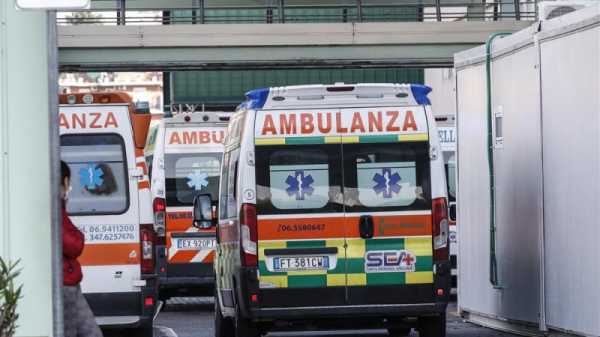
Staff shortages and long waiting lists for treatment have prompted the Italian government to allocate €125 billion to the national health system, announced Health Minister Orazio Schillaci on Wednesday.
Healthcare facilities in all parts of Italy are complaining of a severe shortage of staff, especially in emergency rooms, which led to long waiting lists for those accessing treatment.
Schillaci says the money will be allocated to the National Health Fund.
The news came at the end of the Interministerial Committee for Economic Planning and Sustainable Development (CIPESS) meeting and after lengthy negotiations on the allocation of resources with regions, which complained about the lack of flexibility of the spending ceilings and demanded dedicated resources.
Prime Minister Giorgia Meloni’s (FDI/ECR) government is working on a reform, strongly pushed by Lega (ID), to allow regions to regulate autonomously certain areas, healthcare included.
The reform prompted Schillaci to demand that regions should be ‘guided’ by the health ministry to ensure that all Italian regional healthcare systems guarantee the same conditions of care.
The ministry would not only have the power to direct and distribute funds but also the possibility of “supporting a virtuous mechanism together with the regions to understand who works best and help those who are in difficulty or cannot work so well,” Schillaci explained.
At the moment, healthcare facilities in northern Italy are, on average, considerably better than those in the South. For this reason, many southern citizens move North for treatment.
However, Schillaci emphasised that the problems that the National health system is facing are not only related to funds but also to the structure of the system.
“It is the doctor who must follow the patient to the fullest extent and give a schedule of examinations, follow-ups, and diagnostic investigations to be done,” the minister said, saying doctors must return to the centre.
“If there is a doctor who follows a patient or a facility that has taken charge of him, perhaps for that patient, after an initial visit, it would be enough to do a check-up after a year,” he added.
Schillaci said that Italy should overcome the ‘hospital-centric’ vision, limit hospital admissions that are not strictly necessary, and “return hospitals to acute care settings dedicated to the treatment of the most complex pathologies, thus freeing economic resources to be allocated to the territory and to social and health services.”
During the pandemic, Italy’s public healthcare expenditure reached a level of 7.5% of the GDP, while private healthcare expenditure reached 2.3% of the GDP in 2021. In 2024, healthcare expenditure is expected to be 6.4 %.
(Federica Pascale | EURACTIV.it)
Source: euractiv.com



